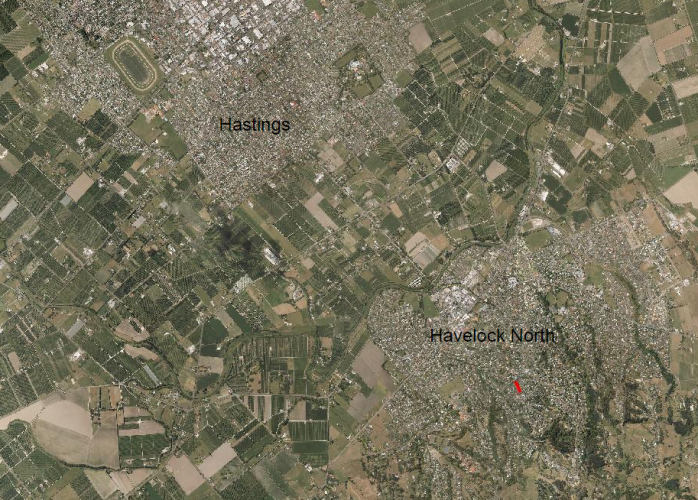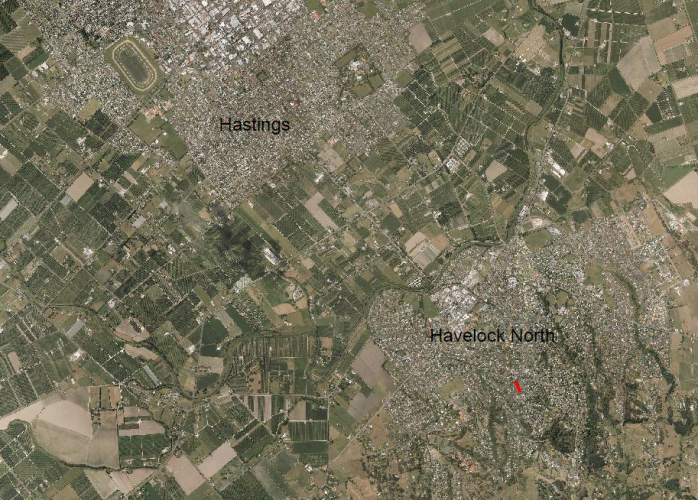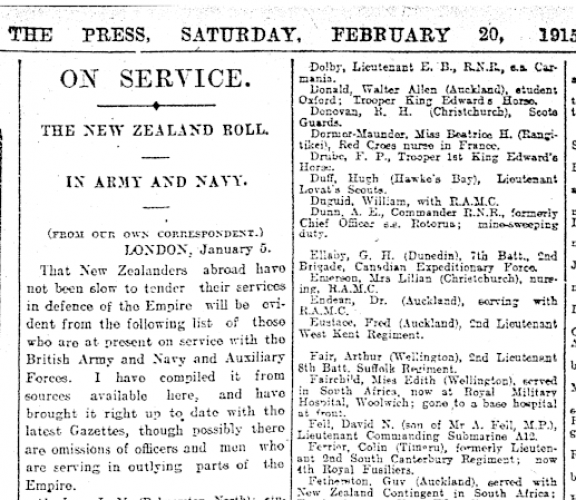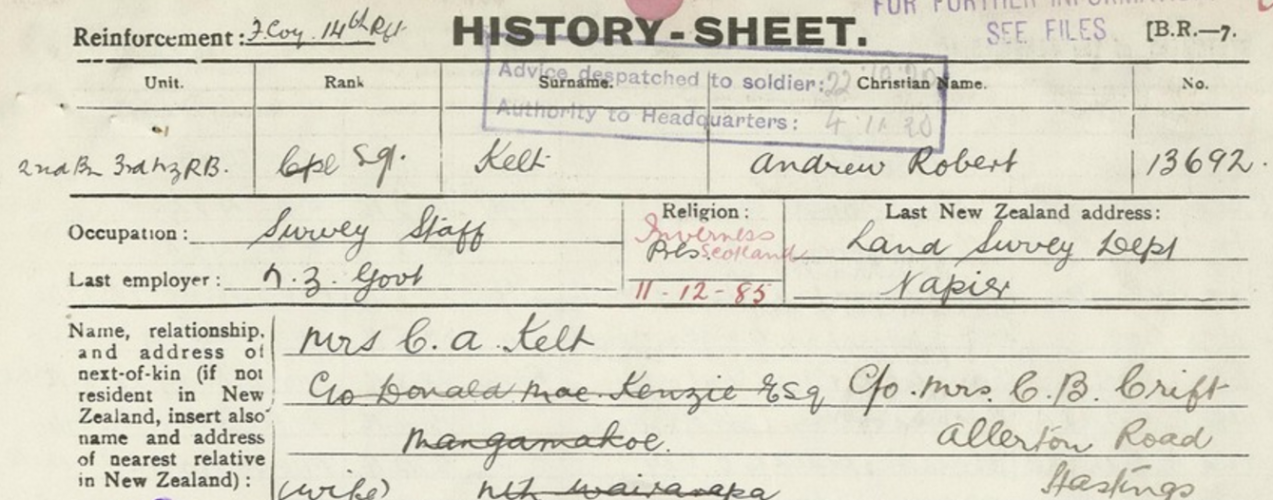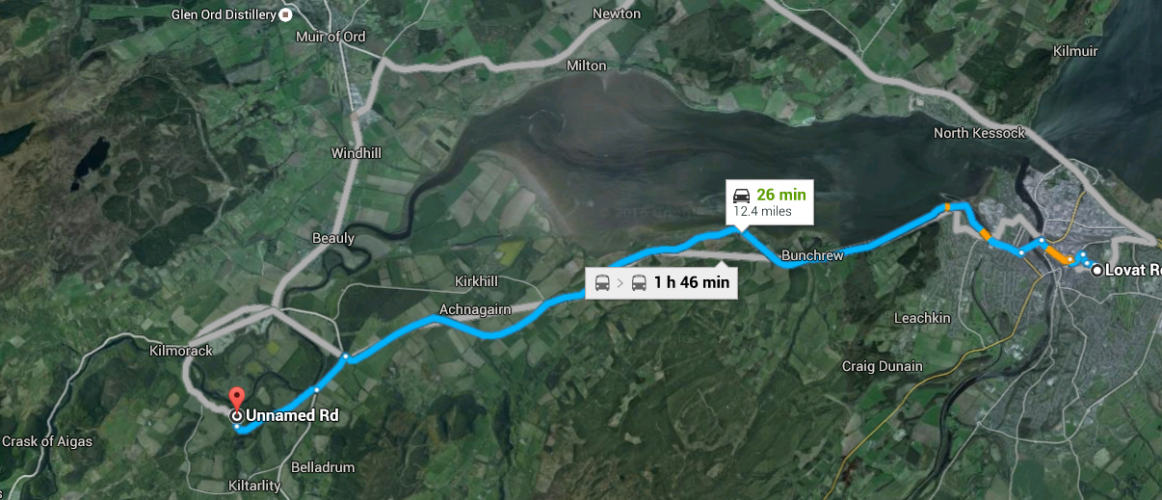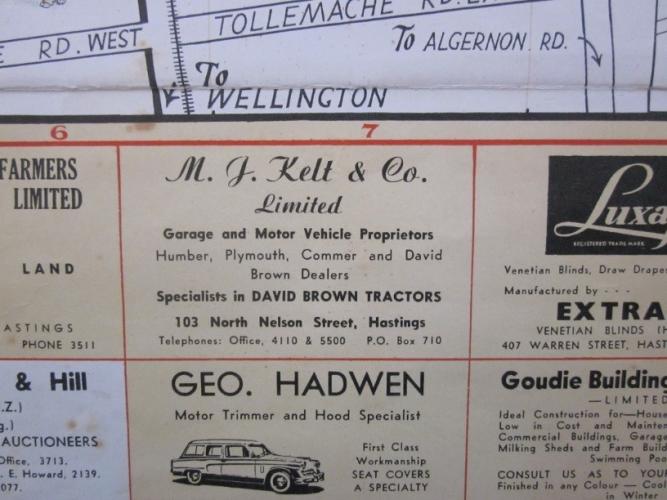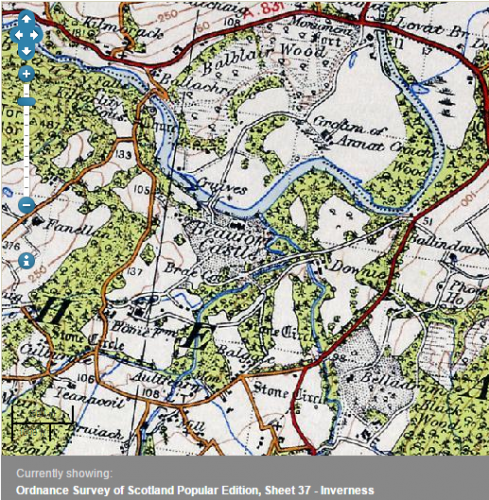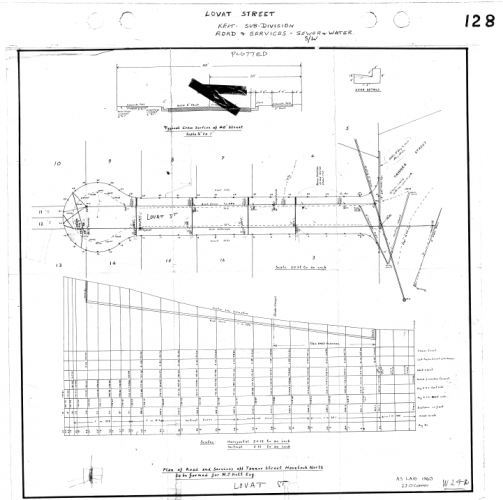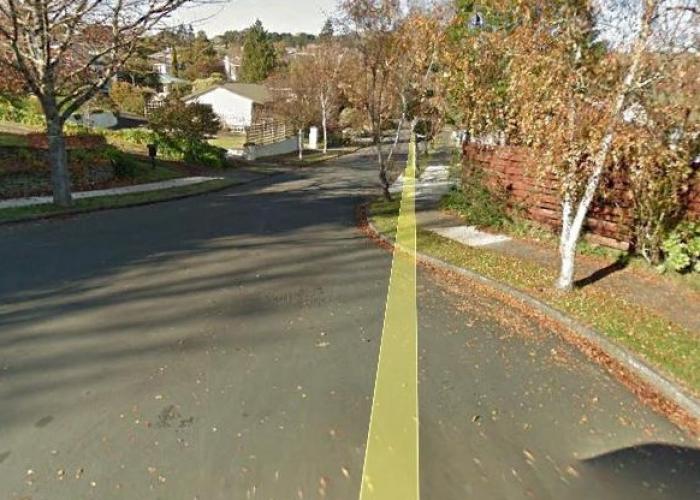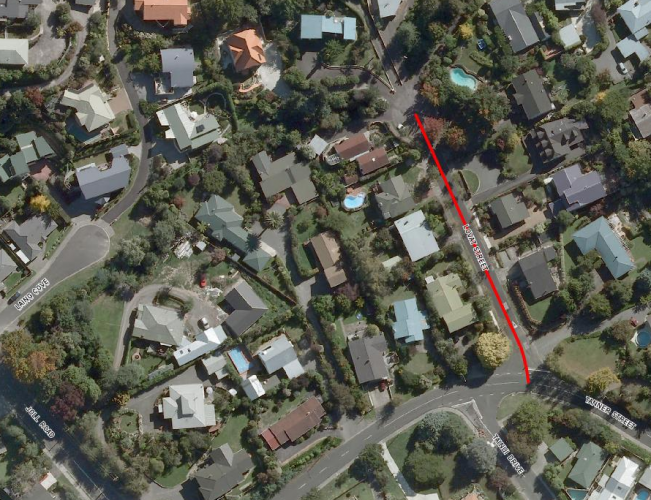053 Lovat Street Hastings, Street View 2017
Reason for the name
Lovat Street was named by Murdo John Wilson Black Kelt (MJ Kelt Esq) on land he subdivided around 1960. The street was named for Colonel Lovat, who MJ Kelt served under in WWI in the Highland Mounted Brigade.
Lovat Street is in Havelock North, off Tanner Street (which runs off the end of Joll Road).
The naming of the street for Colonel Lovat was recorded in Sydney Grant’s articles in ‘Te Mata Times’ in 1975-76.
The Family of Murdo Kelt confirm he had a great respect for Colonel Lovat (aka Lord Lovat, Simon Fraser) and that he named the street for him.
Authors: Katrina Barrett (volunteer, Stoneycroft) Cherie Flintoff (HDC) Gordon Craig Kelt
About the Kelt Family
The Kelt family had more than one connection to the Lovat name, from Inverness, Scotland. The first of the Kelt family to immigrate to New Zealand were James (then aged 28) and Elizabeth Kelt in 1840. MJ Kelt Esq’s grandfather Andrew was James’ uncle. James and Elizabeth were childless, and their land in New Zealand reverted to the family after their deaths.
Murdo Kelt (Esq) was born and grew up in Lovat Road in Inverness, and retained land there for some time. The Lords Lovat family estate was Beaufort Castle, close to Inverness, so it is likely that this influenced the regiment he joined, age 15, in WWI.
MJ Kelt Esq was with the Royal Army Medical Corps 1/1st Battalion, then the 2/1st Highland Mounted Brigade Field Ambulance. Later he was in the West Yorkshire Regiment, with the service number 20576. Murdo J Kelt married Henrietta Hamblin in 1919, and they had a son, also named Murdo J Kelt the same year.
Murdo J Kelt brought the family back to New Zealand on the Ruahine, on 10th October 1922. The manifest shows his mother Mrs. Catherine Kelt (age 64), his cousin Miss CJ Kelt (age 32), Mr. MJ Kelt (age 24), Mrs. (Henrietta) Kelt (age 23), Master MJ Kelt (age 3, later known as Ian) and Master GR Kelt (six months). The family continued to travel extensively but lived locally and Hastings Cemetery is their final resting place.
Murdo’s older brother, Andrew Robert Kelt (born 11/12/1885) and his wife Christina were already settled in New Zealand, and Andrew fought for New Zealand in World War I. They are also buried in the Hastings Cemetery.
The family name MJ Kelt has been passed down the line. MJ Kelt’s son Murdo John Kelt was known as Ian, to avoid confusion with his father. Ian went to Mahora School and served in WWII in the RNZAF as a bomber pilot. He and his wife Joan had a son Murdo J. Kelt (who is known as John), who in turn has a son named Murdo, known as Jonty.
A 1929 street directory shows him living in Eaton Road, Hastings, but he later lived in Tanner Street, where Lovat Street now is. The subdivision was built on what had been the family’s horse paddocks. The subdivision plans located are from 1960. Murdo John Wilson Black Kelt is buried at Hastings cemetery with his wife Henrietta and their son James, who died young.
Lord Lovat
The Lords Lovat were Frasers who favoured the name Simon for their eldest sons. MJ Kelt served under Simon Joseph Fraser, 14th Lord Lovat and 3rd Baron Lovat KT GCVO KCMG CB DSO (25 Nov 1871 –18 Feb 1933).
While legally the 14th Lord Lovat (and 3rd Baron Lovat), he was referred to as the 16th Lord, as the title was under attainder for two generations (1747-1854) until it was reversed, after the 11th Lord Lovat at age 80 was the last person beheaded on Tower Hill for treason, for siding with the Jacobites in the Battle of Culloden, near Inverness. Major General Fraser / Lord Lovat was a leading Roman Catholic aristocrat, landowner, soldier, politician and the 23rd Chief of Clan Fraser. He was well-educated, was an active member of the Oxford University polo team and left with an MA. Simon Fraser (14th / 16th Lord Lovat), was also a distinguished soldier, commissioned into the Queen's Own Cameron Highlanders in 1890.
In January 1900 Lord Lovat raised the Lovat Scouts and served as their second-in-command in the South African War. For the Lovat Scouts, he chose the best marksmen he could find and the perfect commander in the American, Frederick Russell Burnham, who served as Chief of Scouts to Lord Roberts, the British Army Commander-in-Chief. Burnham fittingly described Lovat Scouts as "half wolf and half jackrabbit”.
Lord Lovat was appointed a Knight of the Grand Cross of the Royal Victorian Order in 1903. He was promoted to Brigadier-General in September 1914 and became the Commander of the Highland Mounted Brigade, which included Lovat Scouts.
On 8 September 1915, the brigade sailed with Lord Lovat in command for Alexandria, Egypt arriving on 18 September. On 26 September it landed at Gallipoli where it joined 2nd Mounted Division.
Lord Lovat was appointed a Knight of the Thistle in 1915 for demonstrable leadership and courage.
The two Lovat Scouts Regiments saw extensive involvement in the First World War, firstly as part of the Highland Mounted Brigade. The Lovat Scouts saw service on the Western Front, at Gallipoli, and in Egypt and Macedonia. The Lovat Scouts are referred to in Gallipoli, Suvla Bay and fought closely beside New Zealanders, and at least two New Zealanders fought in Lovat’s Scouts.
Private John Francis Egan of Westport, a journalist at the Dominion prior to the war, enlisted in the Lovat Scouts and served on Gallipoli. He later transferred to the 10th Battalion, Cameron Highlanders. In December 1916, he was gravely wounded in fierce fighting near Tumbitza Farm in the Struma Valley and later died.
Mr Hugh Duff from Napier went to England before the war, joining the Lovat Scouts and rising to the rank of Major. To get to the front he resigned his commission and went to France with the rank of captain in 1917. He was awarded the D.S.O. and the M.C. and at the time of death at the front in 1918 had regained the rank of Major. He was in his mid-forties, unmarried and heir to part of the Wakarara Estate at Kereru.
Mr Duff and other New Zealanders were noted in a 1915 article as among the New Zealanders abroad quick to tender their services in defence of the Empire.
A number of New Zealanders served in the British imperial forces at Salonika rather than with the New Zealand Expeditionary Force (NZEF). They did so for a number of reasons: some were in Britain and it made practical sense to do so, some were keen to get to war and some had a family connection to a British regiment.
The official war correspondent with the New Zealand Force, Mr. Malcolm Ross, writes as follows from Gallipoli, under date October 22:
Two nights ago the Turks were surprised in the Anzac Deve position, which lies to the eastward of Bivuk Anafarta and to the left and north of the ground held by the New Zealand and Australian Division. Here a company of Lovat's Scouts left their trenches and gallantly stormed and seized a Turkish barricade. This they converted and strengthened to their own use, and dug trenches to connect up with it from our own trenches.
Ian Hamilton’s Gallipoli Diary talks about inspecting the lines at Gallipoli with Ellison, Taylor Gascoigne, Freddie, Birdie and de Crespigne – including the 2nd Lovat Scouts under Lieutenant-Colonel Stirling, Lovat having fallen sick.
The “ANZACS at Gallipoli” film by Ashmead Bartlett showed actual scenes in ' the trenches and of the conditions of the life of the soldiers. The Hawera and Normandy Star noted that the film included scenes such as Anzac Beach near Suvla Bay; Lovat's Scouts; Shrapnel Gully, showing main communication trench to all positions; 7th Brigade —Australians, New Zealanders and Tommies —repelling an attack. The movie, comprising a series of scenes from the battlefield, was shown throughout the world, with full houses in Australia and New Zealand.
In March 1916 Lord Lovat took command of the 4th Mounted Division and became a Major General two months later. He became a Rhodes Trustee in 1917.
Lord Lovat died in February 1933, aged 61, and was succeeded by his eldest son Simon Christopher Joseph Fraser, known as Shimmi, as the 15th Lord Lovat (known as the 17th Lord), who distinguished himself during the D-Day landings at Normandy in June 1944 and in other commando actions.

